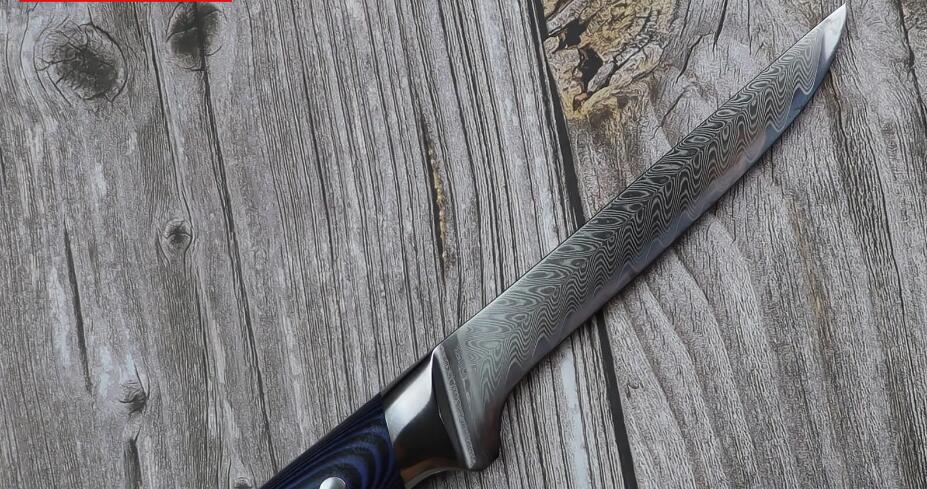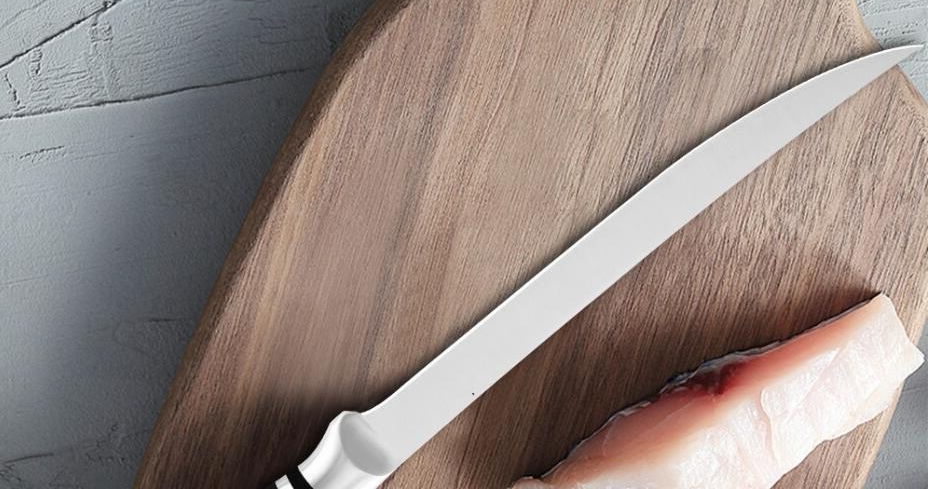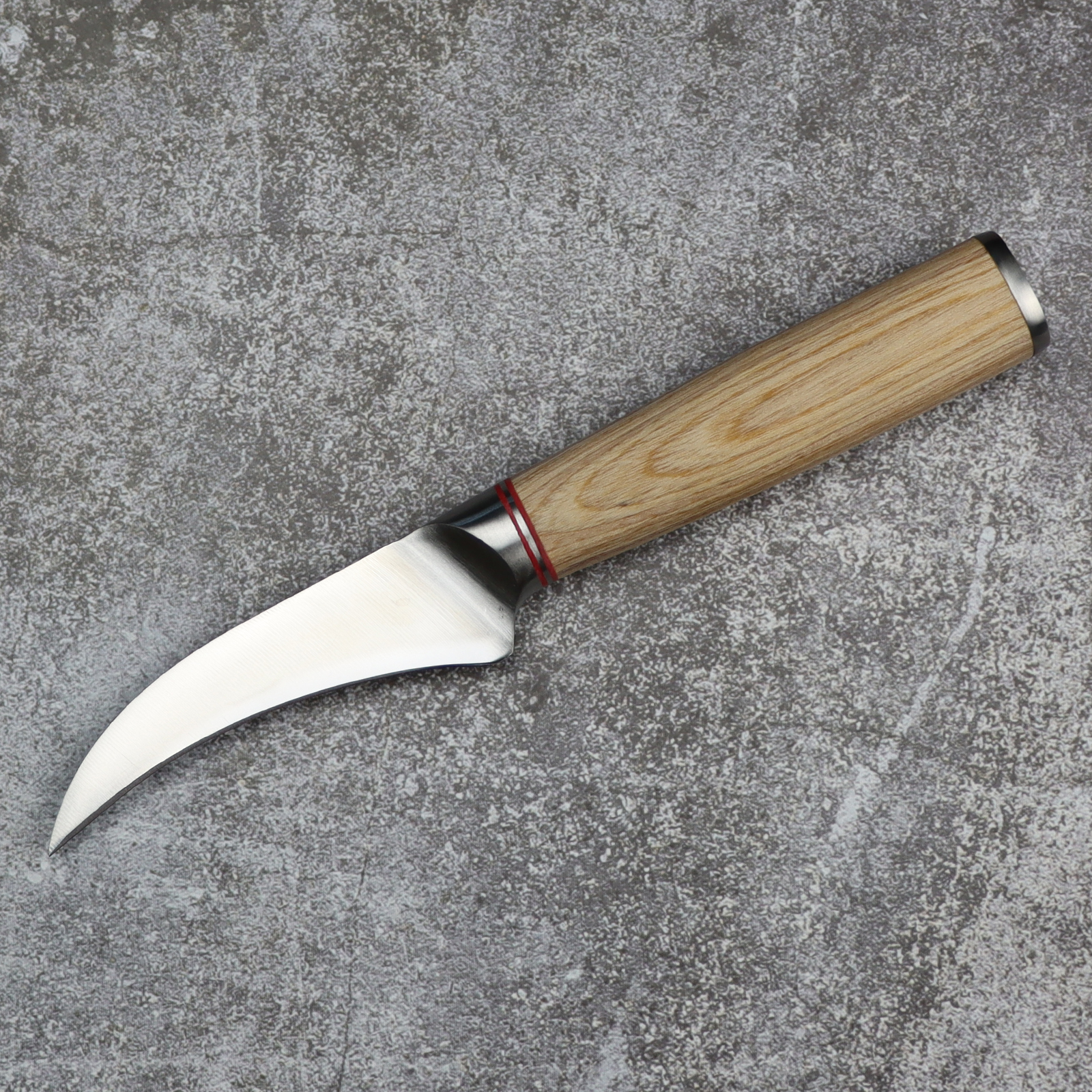Difference Between Boning Knife And Fillet Knife
Feb 22,2023 | Fzkaly
If you're a chef looking to break down a whole chicken or a home cook looking to prepare a fish for dinner, which knife should you reach for? Are boning knives better for tougher cuts of meat, while fillet knives are best for delicate fish fillets? Or can you use one knife for both tasks? In this article, we'll point out the differences between boning knives and fillet knives, learn about their features and uses, so you can choose the right knife for your next cooking project.
What is a Boning Knife?
A boning knife is a type of kitchen knife that is specifically designed for removing bones from meat, poultry, and fish. The blade of a boning knife is long, narrow, and typically has a sharp point that makes it easy to maneuver around bones and joints. The blade can be either stiff or flexible, depending on the type of meat being worked on.

Boning knives come in a variety of sizes, with blade lengths typically ranging from 5 to 7 inches.
What is a Fillet Knife?
A fillet knife is a long, thin-bladed knife that is used for filleting fish, as well as for other tasks that require delicate, precise cuts. The blade of a fillet knife is typically narrow, flexible, and tapered to a sharp point.

The flexibility of the blade allows it to easily follow the contours of the fish and remove the flesh from the bones with minimal waste. Fillet knives are also used for skinning fish and other seafood, as the thin blade makes it easy to separate the skin from the flesh.
Fillet knives come in a variety of lengths, with blade lengths typically ranging from 6 to 11 inches. The longer blades are better suited for larger fish, while shorter blades are more versatile and can be used for a wider range of tasks.
What is Different Between a Boning Knife and a Fillet Knife?
Although fillet knives and boning knives share similar dimensions, their dissimilarities should be noted to fully maximize their functionality. By acknowledgment with these dissimilarities, cooks can select the appropriate knife for each task and enhance their overall cooking experience.
Purpose
While both fillet knives and boning knives are designed for removing bones and skin from meat and fish, they are intended for different tasks. Fillet knives are primarily used for filleting fish, as well as for skinning fish and other seafood. They are also sometimes used for deboning poultry and other meats. Boning knives, on the other hand, are designed specifically for removing bones from meat, including poultry, beef, and pork. They are also used for trimming fat and other unwanted parts from meat.
Blade Length
One of the most obvious differences between fillet knives and boning knives is the blade length. Fillet knives typically have longer blades, ranging from 6 to 11 inches, while boning knives are usually shorter, ranging from 5 to 7 inches. The longer blade of a fillet knife makes it easier to work on larger fish, while the shorter blade of a boning knife provides greater control and precision when working on smaller cuts of meat.
Blade Design
The blade design is another key difference between fillet knives and boning knives. Fillet knives have thin, flexible blades that are tapered to a sharp point. This allows them to easily follow the contours of the fish and remove the flesh from the bones with minimal waste. Boning knives, on the other hand, have blades that are either stiff or flexible, depending on the type of meat being worked on. The blade of a boning knife is typically wider and thicker than a fillet knife, with a sharper angle that allows for more control when making cuts.
Weight
Another difference between fillet knives and boning knives is their weight. Fillet knives are typically lighter than boning knives, as they are designed for delicate work that requires precision and control. Boning knives, on the other hand, are often heavier and more substantial, as they are designed for more heavy-duty tasks that require more force and leverage.
What is a Boning Knife Used For?
As the name suggests, boning knife is designed to remove bones from meat, poultry, and fish. However, a boning knife is much more versatile than its name implies, and can be used for a variety of tasks in the kitchen.
Removing Bones from Meat and Poultry
One of the most common uses of a boning knife is to remove bones from meat and poultry. Whether you're trimming a chicken breast or deboning a whole turkey, a boning knife can make the process much more manageable. The slender and sharp blade allows you to get close to the bone, ensuring that you remove as much meat as possible while leaving the bone intact.
Removing Skin from Meat and Fish
Another task that a boning knife can handle is removing the skin from meat and fish. The blade's flexibility and sharpness make it ideal for this task, as you can slide the blade between the skin and the meat/fish, separating them with ease.
Trimming Fat from Meat
A boning knife is also useful for trimming fat from meat. The blade's narrowness allows you to make precise cuts, removing just the right amount of fat without damaging the meat's texture or appearance.
Slicing Meat
A boning knife can be used for slicing meat. Although not as common as some of the other tasks, a boning knife's sharpness and narrow blade make it ideal for slicing thinner cuts of meat, such as flank steak or sirloin.
What is a Fillet Knife Used For?
Filleting Fish
Fillet knives are primarily used for filleting fish, a process that involves removing the flesh from the bones. Fish fillets are a popular ingredient in many recipes, and having a fillet knife can make this process much easier. The sharp, thin blade of a fillet knife can easily separate the flesh from the bones, allowing for clean cuts and minimal waste.
Removing Skin
Another common use for a fillet knife is to remove the skin from fish. This is often done before filleting, but it can also be done after the fillets have been removed. The flexible blade of a fillet knife makes it easy to slide between the skin and the flesh, allowing for clean, precise cuts.
Deboning Poultry
Fillet knives can also be used for deboning poultry, such as chicken or turkey. The sharp blade can easily cut through the meat and connective tissue, allowing for the bones to be removed without damaging the meat. This is a useful skill for anyone who regularly prepares whole chickens or turkeys.
Trimming Meat
Fillet knives can also be used for trimming meat, such as beef or pork. The thin, flexible blade can easily remove any excess fat or gristle, resulting in a leaner cut of meat. This is especially useful for cuts of meat that are typically tougher and require more trimming.
In addition to the above uses, boning knives and fillet knives can also be used for a variety of other tasks in the kitchen. They can be used to slice vegetables, cut bread, or even carve a roast. The sharp blade and flexibility blade make them a versatile tool that can be used for many different tasks.
Conclusion
Boning knives and fillet knives are two essential tools for any chef or home cook looking to break down meat or fish. Which do you prefer: the precision of a fillet knife or the versatility of a boning knife? The choice is yours.

_1080x.jpeg?w=1000&h=1000)


